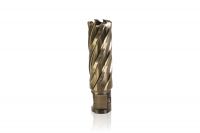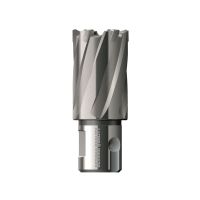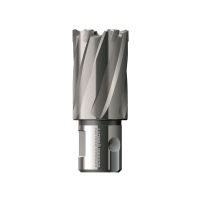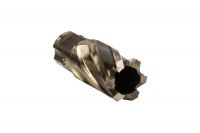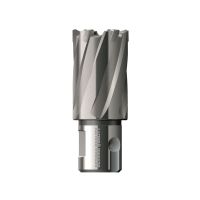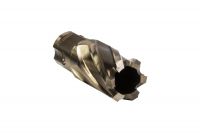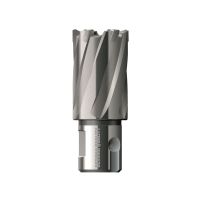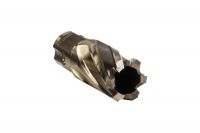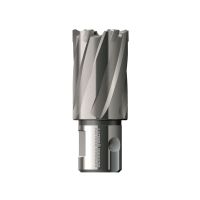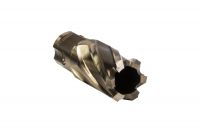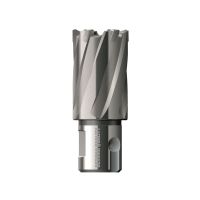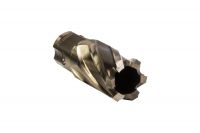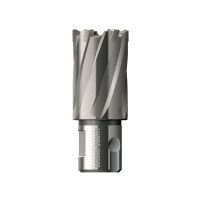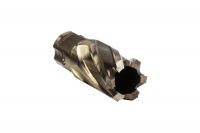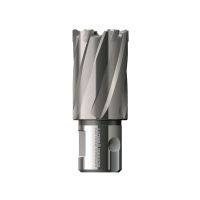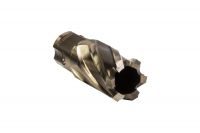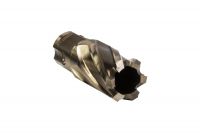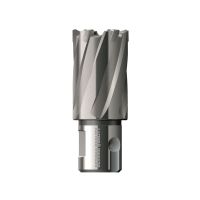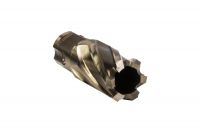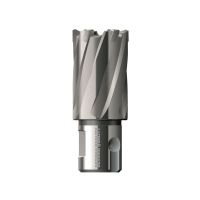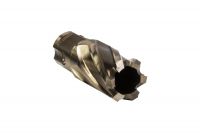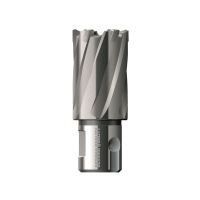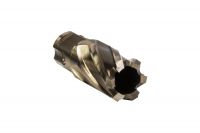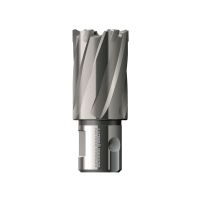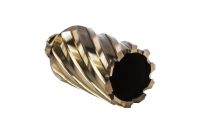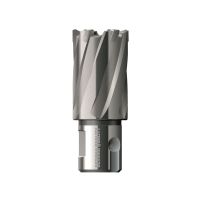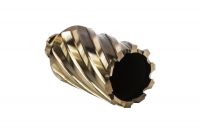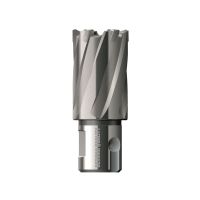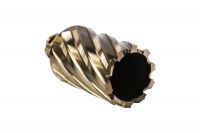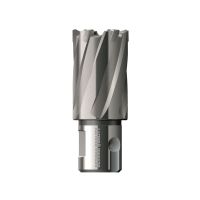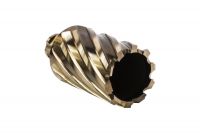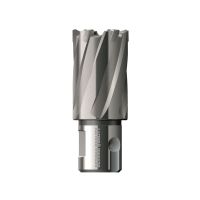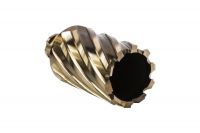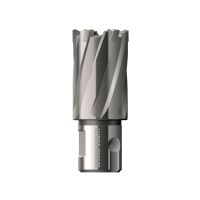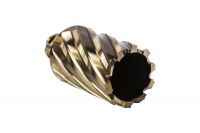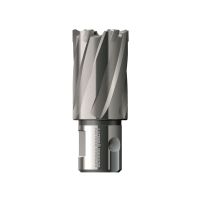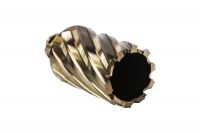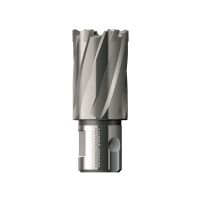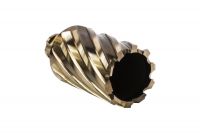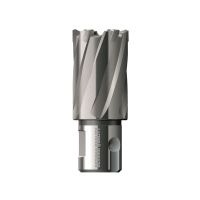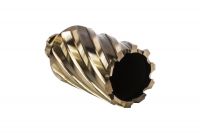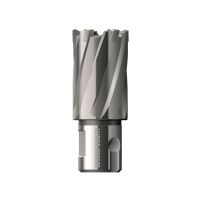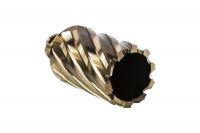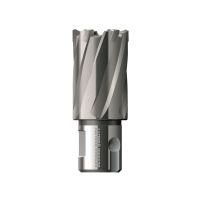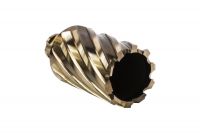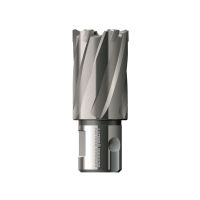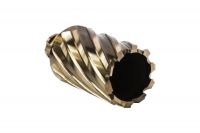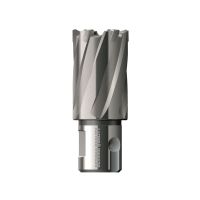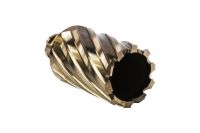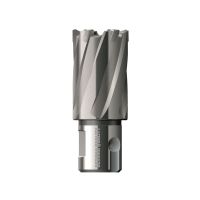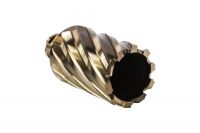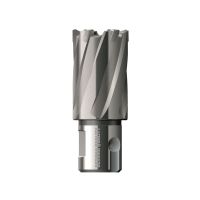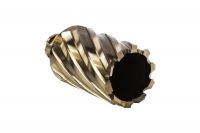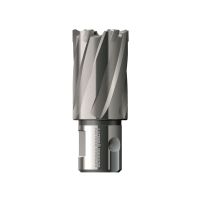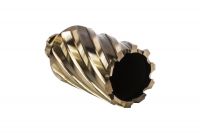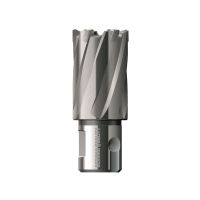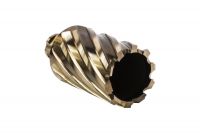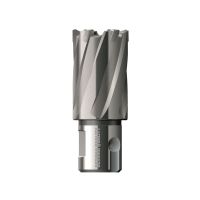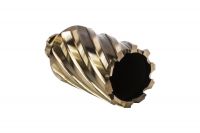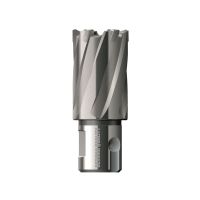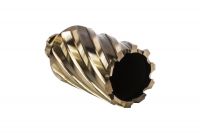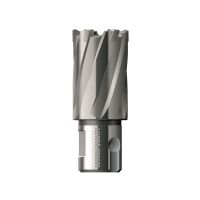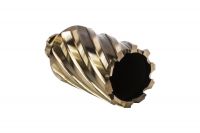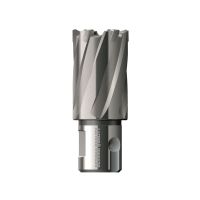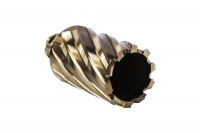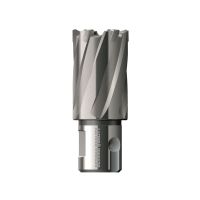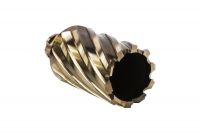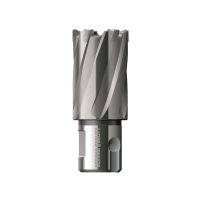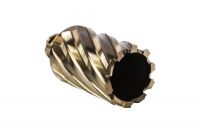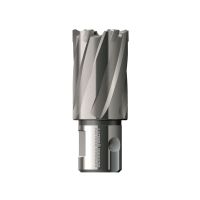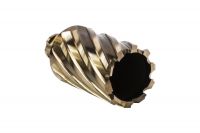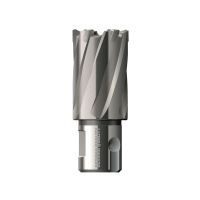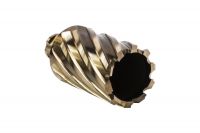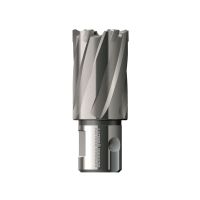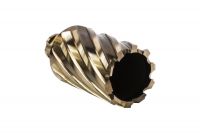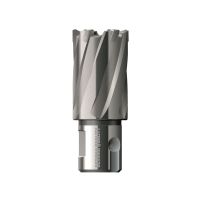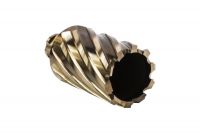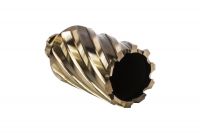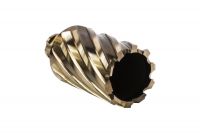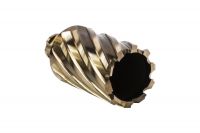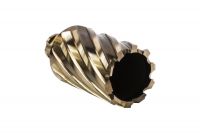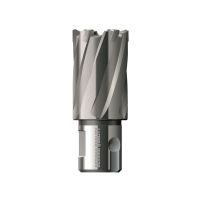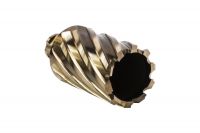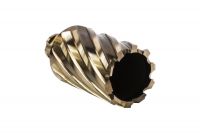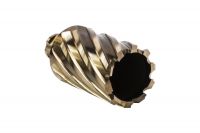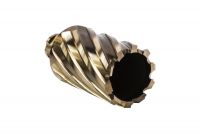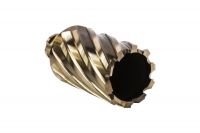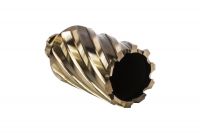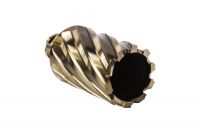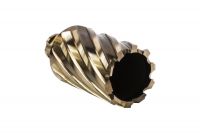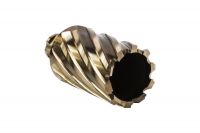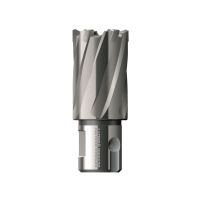Deciding what cutter to choose, and how best to train staff to run your mag drills to ensure optimum cutter life and performance has evolved into a sometimes-complex topic these days – there are many different cutter options for different purposes and performance levels. This article is designed to shed light on the main different cutter options available.
Which cutter to choose?
There are three major ‘substrate’ types to choose from, with plain or coated options available in each. In price order, they are: HSS (High Speed Steel) HSS-Co or HSS-E (High Speed Steel with between 5-8% cobalt content), and TCT (Tungsten Carbide Tipped).
HSS cutters are still the most common type available, are cheap to buy and less prone to breakage compared to HSS-Co. They are the softest cutter so usually go blunt the soonest, and if allowed to get hot to the point of changing colour, will lose hardness and become unusable. HSS-Co cutters are gaining in popularity, as the cobalt content only adds around 10% to the price of HSS, but allows the cutter to heat as far as blue hot before compromising edge hardness. They are also slightly harder than HSS to start with, so allow more holes before going blunt. The downside is that the extra hardness makes them slightly more prone to shattering.
TCT cutters are also gaining in popularity and are already the primary cutter type used in some overseas markets. Their advantages are a relatively soft body which lowers the chance of shattering, combined with extra hard carbide tips at the business end. These tips allow the cutter to be used in hard or soft materials, with much higher speeds than HSS, and with much longer lasting sharpness. While the tips are almost impervious to any heat damage, the solder holding them on isn’t – extreme heat and the tips may fall off! The carbide tips may also chip or break in very rough or interrupted cuts. These cutters can be sharpened in exactly the same way as HSS or HSS-Co cutters can be.
Coated cutters can be advantageous when drilling materials such as stainless steel. In more common materials, coatings can also improve life but not usually as economically as when used in difficult materials. It also makes sense wherever possible to choose a cutter which has a shank designed to fit multiple machine chucks. These cutters will not only have the standard 2 flats, but also between 1-3 dimples in the shank. We find a constant source of annoyance with users is varying pin sizes between cutter brands and sizes. To avoid this as much as possible, we recommend choosing cutters which take the most commonly available pin size in NZ, which is ¼” (6.35mm). This one size should cover cutter diameters from 12-65mm, although some manufacturers use a smaller pin for 12-14mm cutters – it pays to check.



